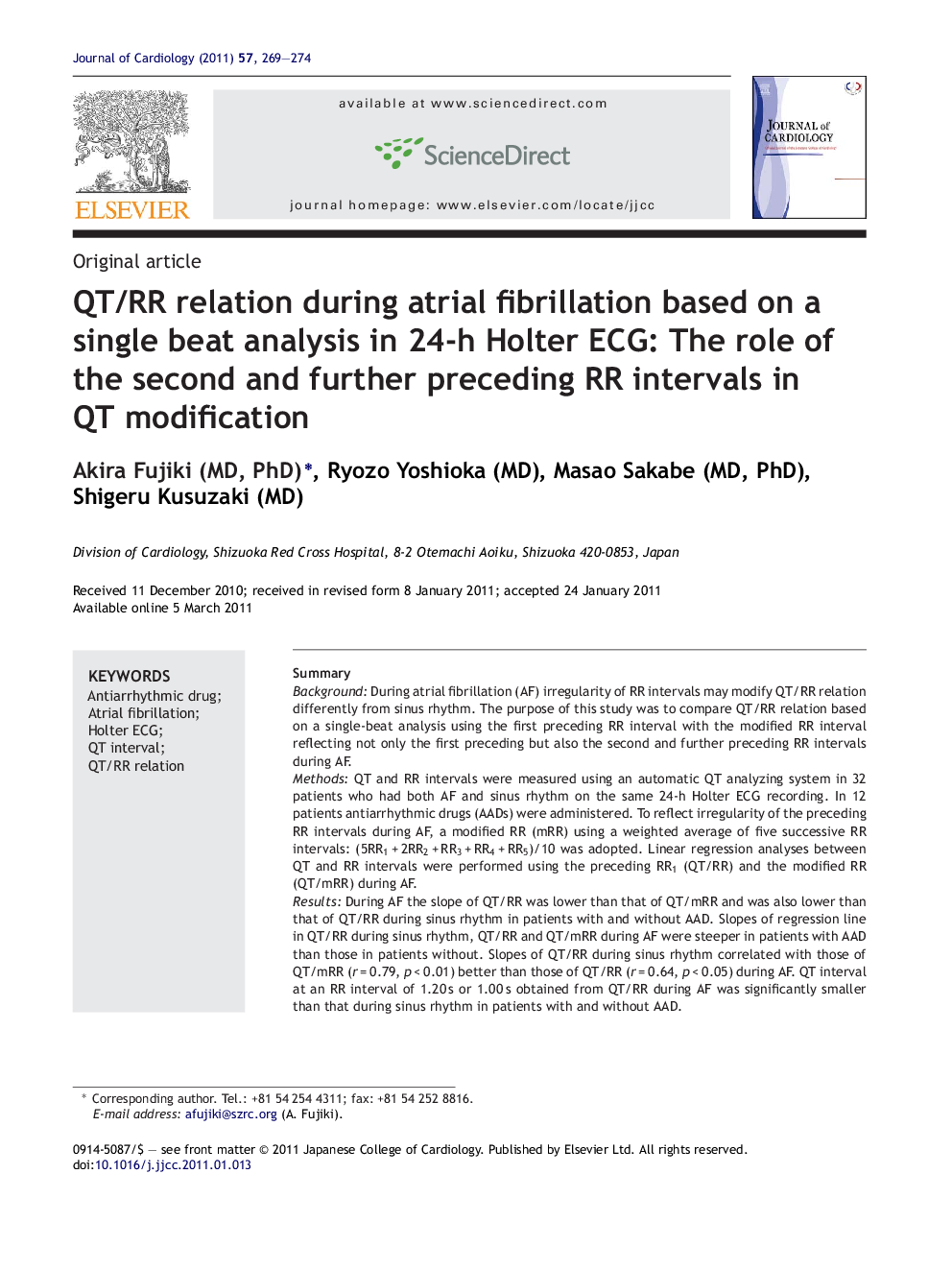| Article ID | Journal | Published Year | Pages | File Type |
|---|---|---|---|---|
| 2963255 | Journal of Cardiology | 2011 | 6 Pages |
SummaryBackgroundDuring atrial fibrillation (AF) irregularity of RR intervals may modify QT/RR relation differently from sinus rhythm. The purpose of this study was to compare QT/RR relation based on a single-beat analysis using the first preceding RR interval with the modified RR interval reflecting not only the first preceding but also the second and further preceding RR intervals during AF.MethodsQT and RR intervals were measured using an automatic QT analyzing system in 32 patients who had both AF and sinus rhythm on the same 24-h Holter ECG recording. In 12 patients antiarrhythmic drugs (AADs) were administered. To reflect irregularity of the preceding RR intervals during AF, a modified RR (mRR) using a weighted average of five successive RR intervals: (5RR1 + 2RR2 + RR3 + RR4 + RR5)/10 was adopted. Linear regression analyses between QT and RR intervals were performed using the preceding RR1 (QT/RR) and the modified RR (QT/mRR) during AF.ResultsDuring AF the slope of QT/RR was lower than that of QT/mRR and was also lower than that of QT/RR during sinus rhythm in patients with and without AAD. Slopes of regression line in QT/RR during sinus rhythm, QT/RR and QT/mRR during AF were steeper in patients with AAD than those in patients without. Slopes of QT/RR during sinus rhythm correlated with those of QT/mRR (r = 0.79, p < 0.01) better than those of QT/RR (r = 0.64, p < 0.05) during AF. QT interval at an RR interval of 1.20 s or 1.00 s obtained from QT/RR during AF was significantly smaller than that during sinus rhythm in patients with and without AAD.ConclusionsThe slope of QT/mRR during AF became closer to that of QT/RR during sinus rhythm compared with that of QT/RR during AF. QT interval during sinus rhythm could be estimated better using QT/mRR than using QT/RR during AF.
